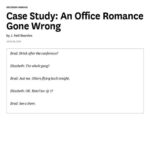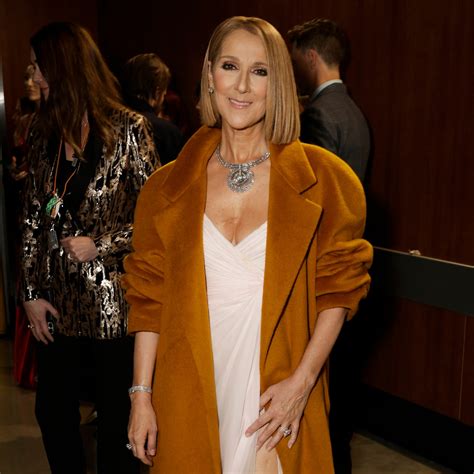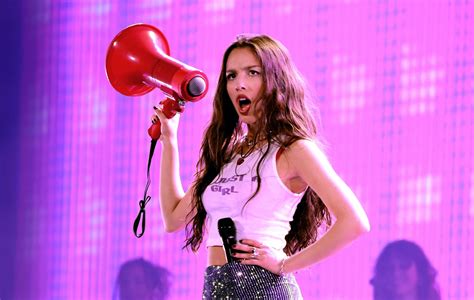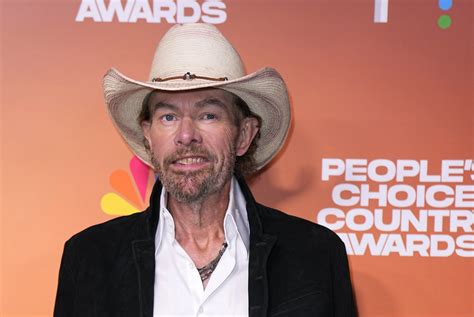
A physical altercation broke out at Disneyland, adding another incident to the park’s history of occasional disturbances, with video footage of the brawl circulating online. The incident, the latest in a series of disruptions at the “Happiest Place on Earth,” has sparked renewed discussions about security measures and guest behavior at the iconic theme park.
Another Day, Another Disneyland Brawl: Mouse House Mayhem Caught on Camera
Disneyland, often idealized as a sanctuary of family-friendly entertainment, witnessed yet another outbreak of violence as a physical altercation erupted among park guests. Video footage of the incident quickly spread across social media platforms, drawing attention to the recurring issue of unruly behavior within the confines of the “Happiest Place on Earth.” This latest episode has ignited fresh concerns regarding security protocols, guest conduct, and the overall atmosphere at the iconic theme park.
The incident, captured on camera by fellow park attendees, shows individuals engaged in a heated argument that quickly escalated into a physical confrontation. Punches were thrown, and bystanders were forced to step back to avoid being caught in the melee. The exact cause of the altercation remains unclear, although eyewitness accounts suggest a dispute between several adults triggered the violence.
Disneyland security personnel swiftly responded to the scene and intervened to break up the fight. Local law enforcement was also notified and arrived to conduct further investigations. While details regarding potential arrests or charges remain scarce, the incident serves as a stark reminder that even within the whimsical world of Disney, real-world tensions can sometimes intrude.
“We do not condone this behavior,” a Disneyland spokesperson stated. “We strive to create a safe and enjoyable environment for all our guests, and we take such incidents very seriously.”
This most recent brawl is not an isolated event; Disneyland has experienced several similar incidents over the years. In 2019, a large-scale family brawl made national headlines, leading to multiple arrests and lifetime bans from the park. Other instances of disruptive behavior, ranging from verbal altercations to smaller physical confrontations, have been reported periodically.
The recurring nature of these incidents raises questions about the factors contributing to such behavior. Some observers point to the stressful conditions often associated with theme park visits, including long lines, crowded spaces, and heightened expectations. Others suggest that societal trends, such as increased aggression and a decline in civility, may be contributing to the problem.
Disneyland officials have implemented various measures to address security concerns and promote responsible guest behavior. These measures include increased security personnel, enhanced surveillance technology, and stricter enforcement of park rules. However, the latest incident suggests that further steps may be necessary to prevent future disruptions.
The incident has generated a range of reactions from the public. Some express outrage and disappointment that such behavior would occur in a place known for its family-friendly atmosphere. Others call for stricter penalties for those who engage in violence or disruptive behavior. Still others express concern that these incidents are becoming increasingly common, potentially eroding the overall Disneyland experience.
As Disneyland continues to grapple with the challenge of maintaining a safe and enjoyable environment for all guests, the latest brawl serves as a reminder that constant vigilance and proactive measures are essential. The park’s reputation as a magical escape depends, in part, on its ability to effectively address and prevent such incidents from occurring in the future.
A History of Unhappy Incidents at the “Happiest Place on Earth”
While Disneyland strives to maintain its image as a joyous and family-oriented destination, the park has, unfortunately, been the site of several notable incidents that have disrupted the intended atmosphere of carefree fun. These incidents range from minor disturbances to more serious altercations, highlighting the challenges of managing large crowds and maintaining order in a high-pressure environment.
One of the most widely publicized incidents occurred in July 2019, when a large-scale brawl broke out in Fantasyland. The fight, reportedly triggered by a disagreement over line cutting, involved multiple members of a family and resulted in several injuries. Video footage of the incident quickly went viral, sparking widespread condemnation and prompting Disneyland to issue lifetime bans to those involved.
In addition to physical altercations, Disneyland has also experienced instances of theft, vandalism, and other forms of disruptive behavior. In 2018, a man was arrested for allegedly stealing thousands of dollars worth of merchandise from various stores within the park. In another incident, a group of teenagers was caught vandalizing a restroom, causing significant damage.
These incidents are not always isolated to park guests. In 2015, several Disneyland cast members were arrested for allegedly stealing costumes and props from the park. The thefts, which reportedly went on for several months, involved a wide range of items, including character costumes, ride components, and decorative elements.
Disneyland has implemented various security measures to prevent and respond to such incidents. These measures include uniformed security personnel, undercover officers, surveillance cameras, and metal detectors. The park also has a strict code of conduct that prohibits disruptive behavior, and violators are subject to ejection and potential legal action.
Despite these efforts, incidents continue to occur, highlighting the ongoing challenge of maintaining order in a large and diverse environment. Some experts suggest that the stressful conditions often associated with theme park visits, such as long lines, crowded spaces, and high expectations, can contribute to heightened emotions and increased conflict. Others point to broader societal trends, such as increased aggression and a decline in civility, as potential factors.
As Disneyland continues to evolve and adapt to changing times, the park must remain vigilant in its efforts to maintain a safe and enjoyable environment for all guests. This requires a multi-faceted approach that includes enhanced security measures, proactive enforcement of park rules, and a commitment to promoting responsible guest behavior.
The Impact of Social Media on Disneyland Incidents
The rise of social media has profoundly impacted how incidents at Disneyland are perceived and disseminated. In the past, such events might have remained relatively localized, known only to those who were present or those who heard about them through word-of-mouth. Today, however, incidents captured on smartphones can quickly go viral, reaching a global audience in a matter of minutes.
The widespread sharing of videos and images from Disneyland incidents can have several consequences. First, it can amplify the negative publicity surrounding the park, potentially deterring potential visitors and damaging its reputation. Second, it can create a sense of fear and anxiety among those who are planning to visit the park, leading them to question the safety and security of the environment.
Third, social media can also contribute to a phenomenon known as “copycat behavior,” where individuals are inspired to engage in disruptive or illegal activities after seeing similar incidents online. This can create a cycle of escalating violence and disorder, making it increasingly difficult for Disneyland to maintain control.
Disneyland officials are aware of the impact of social media and have taken steps to mitigate its negative effects. These steps include actively monitoring social media platforms for mentions of the park, responding to negative comments and complaints, and working to promote positive stories and images of the Disneyland experience.
The park has also implemented policies that restrict the use of social media within certain areas, such as backstage areas and restricted zones. These policies are designed to protect the privacy of cast members and prevent the unauthorized dissemination of sensitive information.
However, despite these efforts, Disneyland faces an uphill battle in managing the impact of social media. The sheer volume of content generated by park guests makes it impossible to monitor everything, and the speed at which information spreads makes it difficult to control the narrative.
As social media continues to evolve, Disneyland will need to adapt its strategies to effectively manage its impact and protect its reputation. This requires a proactive approach that includes not only monitoring and responding to negative content but also actively promoting positive stories and experiences that showcase the best of what Disneyland has to offer.
Security Measures and Protocols at Disneyland
Disneyland employs a comprehensive security strategy designed to ensure the safety and well-being of its guests and cast members. This strategy encompasses a wide range of measures, including uniformed security personnel, undercover officers, surveillance cameras, metal detectors, and a strict code of conduct.
Uniformed security personnel are stationed throughout the park, providing a visible presence and deterring potential criminal activity. These officers are trained to respond to a variety of situations, including disturbances, medical emergencies, and suspicious behavior.
Undercover officers also operate within the park, blending in with the crowd and monitoring for illegal activities. These officers are often tasked with investigating theft, drug use, and other crimes that may not be readily apparent to uniformed officers.
Surveillance cameras are strategically placed throughout the park, providing a constant stream of video footage that can be used to monitor activity and investigate incidents. The cameras are monitored by security personnel in a central control room, allowing them to quickly identify and respond to potential threats.
Metal detectors are located at the entrance to the park, screening guests for weapons and other prohibited items. The metal detectors are operated by security personnel who are trained to identify suspicious items and conduct further searches if necessary.
Disneyland also has a strict code of conduct that prohibits disruptive behavior, including fighting, vandalism, and harassment. Violators of the code of conduct are subject to ejection from the park and potential legal action.
In addition to these measures, Disneyland also works closely with local law enforcement agencies to coordinate security efforts and respond to emergencies. The park has a dedicated team of security professionals who work around the clock to ensure the safety and security of the environment.
Despite these efforts, security breaches and incidents do occur, highlighting the ongoing challenge of maintaining order in a large and complex environment. Disneyland officials are constantly evaluating and updating their security measures to address emerging threats and improve the overall safety of the park.
The Psychological Factors Contributing to Theme Park Altercations
The seemingly incongruous nature of violence erupting in a place as carefully curated for happiness as Disneyland begs the question: what psychological factors might contribute to such altercations? Several elements, often interacting in complex ways, can increase the likelihood of conflict among theme park visitors.
First, crowd psychology plays a significant role. Large crowds can create a sense of anonymity and deindividuation, where individuals feel less accountable for their actions. This can lead to a loosening of inhibitions and an increased willingness to engage in behaviors they would normally avoid. The close proximity to others in crowded spaces can also create tension and irritability, making people more easily provoked.
Second, stress and frustration are common experiences at theme parks. Long lines, crowded attractions, and the pressure to maximize enjoyment can lead to significant stress. This stress can manifest as irritability, impatience, and a reduced ability to cope with minor inconveniences. When frustration levels reach a certain point, even seemingly trivial events can trigger an outburst.
Third, high expectations and unmet needs can contribute to disappointment and anger. Many visitors arrive at Disneyland with idealized expectations of a perfect day. When those expectations are not met – due to long wait times, ride closures, or other unforeseen circumstances – they can experience a sense of disappointment and resentment. This can be particularly acute for families who have invested significant time and money in their Disneyland vacation.
Fourth, alcohol consumption can further exacerbate these factors. While Disneyland does not have the same prevalence of alcohol as other venues, the presence of alcohol can lower inhibitions and impair judgment, making people more likely to engage in aggressive or disruptive behavior.
Fifth, heat and fatigue can also contribute to irritability and poor decision-making. Spending long hours in the sun and walking long distances can lead to physical exhaustion, which can impair cognitive function and increase the likelihood of emotional outbursts.
Finally, group dynamics can play a role in escalating conflicts. When individuals are traveling in groups, they may feel a sense of loyalty and obligation to defend their group members, even if they disagree with their actions. This can lead to a cycle of escalation, where minor disagreements quickly escalate into full-blown altercations.
Understanding these psychological factors can help Disneyland officials develop strategies to mitigate the risk of violence and promote a more peaceful and enjoyable environment for all guests. This might involve measures such as reducing crowding, managing wait times more effectively, providing clear and accurate information about park conditions, and promoting responsible behavior through signage and public service announcements.
The Legal Ramifications of Fighting at Disneyland
Engaging in a physical altercation at Disneyland, or any public space for that matter, can have significant legal ramifications. The specific charges and penalties will depend on the severity of the injuries, the intent of the perpetrator, and the applicable state and local laws.
Assault and Battery: The most common charges in a fight are assault and battery. Assault is typically defined as an intentional act that creates a reasonable apprehension of immediate harmful or offensive contact. Battery is the actual intentional and unlawful physical contact with another person. Depending on the severity of the injuries, these charges can range from misdemeanors to felonies.
Aggravated Assault and Battery: If the altercation involves the use of a weapon, such as a knife or a blunt object, or if the victim sustains serious bodily injury, the charges can be elevated to aggravated assault and battery. These are typically felony offenses that carry significantly harsher penalties, including lengthy prison sentences.
Disturbing the Peace: Even if no one is physically injured, individuals involved in a fight can be charged with disturbing the peace. This is a misdemeanor offense that typically involves engaging in disruptive or tumultuous behavior that disrupts the peace and quiet of the surrounding area.
Public Intoxication: If an individual is intoxicated at the time of the altercation, they may also be charged with public intoxication. This is typically a misdemeanor offense that can result in a fine and/or a short jail sentence.
Trespassing: Disneyland has the right to eject anyone who violates its rules of conduct, including engaging in fighting or disruptive behavior. If an individual refuses to leave the park after being asked to do so, they can be charged with trespassing.
Civil Lawsuits: In addition to criminal charges, individuals who are injured in a fight can also file a civil lawsuit against the perpetrator to recover damages for their injuries. These damages can include medical expenses, lost wages, pain and suffering, and punitive damages.
Disneyland itself may also face legal liability if it is found to be negligent in providing adequate security or failing to prevent the altercation from occurring. However, proving negligence can be difficult, as Disneyland has a duty to provide reasonable security, but it is not required to guarantee the safety of its guests.
The legal process following a fight at Disneyland can be complex and time-consuming. Individuals who are arrested or injured in a fight should seek legal counsel as soon as possible to protect their rights and interests. Disneyland also typically conducts its own internal investigation into such incidents and may cooperate with law enforcement in their investigation.
The Debate on Stricter Security Measures vs. Preserving the Disneyland Experience
The recurring incidents of disruptive behavior at Disneyland raise a fundamental question: How can the park enhance security measures without compromising the magical and immersive experience that visitors expect? This debate involves balancing the need for safety and order with the desire to maintain a welcoming and enjoyable atmosphere.
Advocates for stricter security measures argue that the park must prioritize the safety of its guests and cast members above all else. They point to the potential for serious injury or even loss of life in violent altercations and argue that Disneyland should take every possible step to prevent such incidents from occurring.
Specific proposals for stricter security measures include:
- Increased security personnel: Deploying more uniformed and undercover officers throughout the park to deter potential troublemakers and respond quickly to incidents.
- Enhanced surveillance technology: Installing more surveillance cameras in strategic locations and using advanced analytics to detect suspicious behavior.
- Stricter enforcement of park rules: Imposing harsher penalties for those who violate the park’s code of conduct, including lifetime bans for serious offenses.
- Expanded use of metal detectors: Screening all guests for weapons and other prohibited items at all entrances.
- Increased alcohol restrictions: Limiting the availability of alcohol within the park or prohibiting its consumption altogether.
However, opponents of stricter security measures argue that such measures could create a more intrusive and less enjoyable experience for guests. They fear that Disneyland could become more like an airport security checkpoint than a magical theme park.
Specific concerns about stricter security measures include:
- Increased wait times: More thorough security screenings could lead to longer wait times to enter the park, reducing the amount of time guests have to enjoy the attractions.
- A more sterile atmosphere: The presence of more security personnel and surveillance cameras could create a less welcoming and more sterile atmosphere.
- Privacy concerns: The use of advanced surveillance technology could raise concerns about privacy and the potential for misuse of personal information.
- A false sense of security: Stricter security measures may not be foolproof and could create a false sense of security, leading guests to let their guard down.
- Impact on cast member morale: Increased security duties could place additional stress on cast members and detract from their ability to provide excellent customer service.
Finding the right balance between security and the Disneyland experience is a complex challenge. Park officials must carefully weigh the potential benefits and drawbacks of each proposed measure and consider the impact on all stakeholders, including guests, cast members, and the surrounding community.
The Role of Disneyland in Addressing Societal Issues
The incidents at Disneyland also raise broader questions about the role of the park in addressing societal issues such as violence and incivility. While Disneyland is primarily an entertainment venue, it also serves as a microcosm of society, reflecting the trends and challenges that exist in the wider world.
Some argue that Disneyland has a responsibility to promote positive values and encourage responsible behavior among its guests. This could involve initiatives such as:
- Promoting civility and respect: Incorporating messages of civility and respect into park signage, advertising, and entertainment.
- Educating guests about park rules: Providing clear and accessible information about the park’s code of conduct and the consequences of violating it.
- Supporting community initiatives: Partnering with local organizations to address issues such as violence prevention, conflict resolution, and mental health.
- Training cast members in conflict resolution: Equipping cast members with the skills and knowledge to de-escalate conflicts and promote peaceful interactions.
- Creating a more inclusive environment: Ensuring that Disneyland is a welcoming and inclusive place for people of all backgrounds and abilities.
Others argue that Disneyland’s primary responsibility is to provide a safe and enjoyable experience for its guests and that it should not be expected to solve broader societal problems. They contend that focusing on security measures and enforcing park rules is the most effective way to address disruptive behavior.
There is no easy answer to the question of Disneyland’s role in addressing societal issues. However, it is clear that the park has the potential to play a positive role in promoting positive values and encouraging responsible behavior. By working in partnership with the community and implementing effective security measures, Disneyland can strive to create a more peaceful and enjoyable environment for all.
Frequently Asked Questions (FAQ)
1. What caused the recent fight at Disneyland?
The exact cause of the recent fight at Disneyland is still under investigation. Eyewitness accounts suggest that a dispute between several adults escalated into a physical altercation. However, specific details about the initial disagreement are not yet publicly available.
2. Were there any arrests made in connection with the Disneyland brawl?
As of the latest reports, details regarding potential arrests or charges remain scarce. Local law enforcement responded to the scene and conducted further investigations. More information is expected to be released as the investigation progresses.
3. What is Disneyland doing to prevent future fights?
Disneyland officials have implemented various measures to address security concerns and promote responsible guest behavior. These measures include increased security personnel, enhanced surveillance technology, and stricter enforcement of park rules. They are also continuously evaluating and updating their security protocols to address emerging threats and improve the overall safety of the park.
4. What are the consequences of getting into a fight at Disneyland?
The consequences of getting into a fight at Disneyland can be severe. Violators of the park’s code of conduct are subject to ejection from the park and potential legal action. Depending on the severity of the injuries and the applicable state and local laws, individuals involved in a fight can face criminal charges such as assault, battery, disturbing the peace, or even aggravated assault if weapons are involved. Disneyland also reserves the right to issue lifetime bans to those involved in serious incidents.
5. Is Disneyland a safe place to visit considering these incidents?
While incidents like the recent brawl are concerning, Disneyland remains a relatively safe place to visit. The park has implemented comprehensive security measures and is constantly working to improve its safety protocols. Millions of people visit Disneyland each year without incident. However, it is important for guests to be aware of their surroundings, report any suspicious activity, and follow the park’s rules and guidelines to help ensure a safe and enjoyable experience for everyone.









